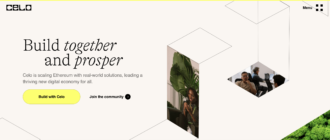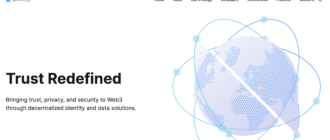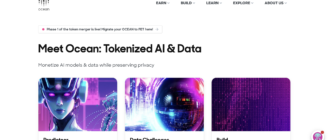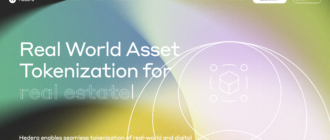This article will delve into the multifaceted aspects of the MANTRA project and its native cryptocurrency, OM. MANTRA, a vertically integrated and community-governed DeFi platform, has gained prominence in the blockchain space for its innovative approach to decentralized finance, regulatory compliance, and tokenization of real-world assets (RWAs). Throughout this article, we will explore MANTRA’s comprehensive ecosystem, including its technological framework, tokenomics, and the various applications within its ecosystem. We will also assess the potential for growth and the future outlook of the MANTRA project.
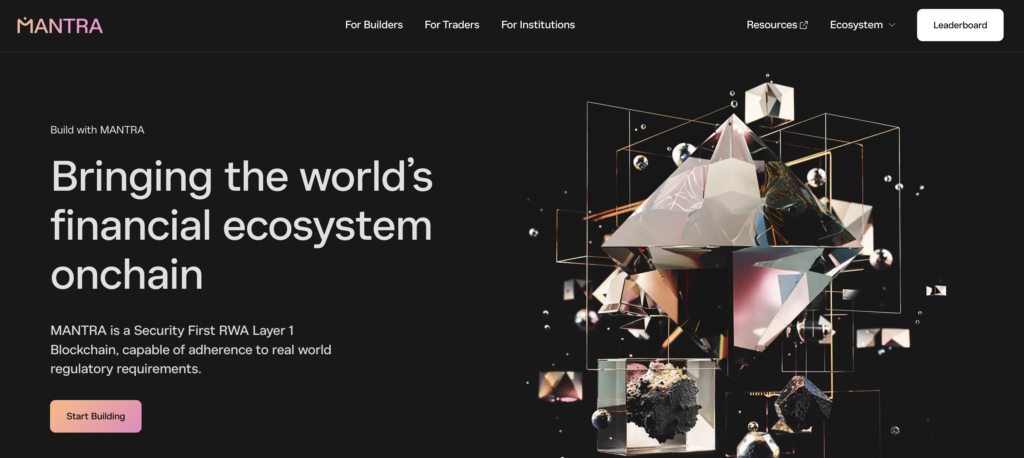
What is MANTRA?
MANTRA is a vertically integrated and regulatory-compliant decentralized finance (DeFi) platform that leverages blockchain technology to offer a broad spectrum of financial services. At its core, MANTRA aims to democratize access to financial tools while maintaining a high standard of security and regulatory compliance. The platform is built on the Cosmos SDK, ensuring interoperability through the Inter-Blockchain Communication (IBC) protocol, and supports the creation and management of tokenized real-world assets (RWAs).
MANTRA encompasses several key components:
- MANTRA Chain: A security-first Layer 1 blockchain designed for regulatory compliance and scalability. It supports high transaction throughput and integrates various modules to facilitate the tokenization and management of RWAs.
- MANTRA Finance: A DeFi platform that bridges traditional finance (TradFi) and decentralized finance, enabling transparent and permissionless trading, issuing, and earning from digital assets.
- MANTRA Nodes: Provides infrastructure-as-a-service (IaaS), supporting validator node operations across multiple blockchains, enhancing the platform’s DeFi ecosystem.
- MANTRA DAO: A decentralized autonomous organization (DAO) that empowers the community to participate in governance and decision-making processes, ensuring the platform’s development aligns with user interests.
History of the Project
MANTRA was launched with the vision of integrating decentralized financial services with regulatory compliance, thus addressing the challenges faced by traditional financial systems. The project has undergone significant milestones since its inception:
- Initial Launch: The project began as MANTRA DAO, focusing on creating a community-governed DeFi platform.
- Expansion to MANTRA: Rebranded to MANTRA, the platform expanded its scope to include a broader range of financial services and enhanced regulatory compliance.
- Development of MANTRA Chain: Built on the Cosmos SDK, MANTRA Chain was developed to support the tokenization of RWAs and provide a secure, scalable infrastructure for building Web3 applications.
- Introduction of MANTRA Finance and MANTRA Nodes: These components were introduced to offer DeFi services and infrastructure support, catering to both retail and institutional users.
- Regulatory Collaborations: MANTRA has engaged with various regulatory bodies to ensure compliance and facilitate the smooth onboarding of RWAs onto the blockchain.
Through continuous innovation and adherence to regulatory standards, MANTRA has positioned itself as a pioneering force in the DeFi space, aiming to bridge the gap between traditional finance and the evolving blockchain ecosystem.
How Does MANTRA Work?
MANTRA operates on a sophisticated technological framework designed to provide secure, scalable, and compliant financial services. The project leverages several advanced technologies to achieve its goals:
- Blockchain Infrastructure: MANTRA Chain is built using the Cosmos SDK, which enables high interoperability through the Inter-Blockchain Communication (IBC) protocol. This allows seamless cross-chain interactions and supports various decentralized applications (dApps).
- CosmWasm Integration: By integrating CosmWasm, MANTRA provides a robust environment for developers to build secure and efficient smart contracts, enhancing the ecosystem’s functionality and versatility.
- Decentralized Identity (DID): MANTRA employs a decentralized identity module to streamline KYC/AML processes, ensuring that all network participants are verified, thus maintaining regulatory compliance.
- Real-World Asset (RWA) Tokenization: MANTRA’s blockchain is tailored for the tokenization of RWAs. The platform includes modules like the MANTRA Compliance Module and Asset Module, which simplify the creation, management, and trading of tokenized assets, thus democratizing access to traditionally illiquid assets.
Blockchain and Consensus Mechanism
MANTRA Chain utilizes a Proof of Stake (PoS) consensus mechanism, ensuring energy efficiency and scalability. Here are some technical details:
- Proof of Stake (PoS): Validators are chosen to create new blocks and validate transactions based on the number of tokens they hold and are willing to “stake” as collateral. This mechanism enhances security and reduces energy consumption compared to Proof of Work (PoW) systems.
- Validator Nodes: MANTRA employs a network of validator nodes to maintain the blockchain. These nodes are responsible for block production, transaction validation, and network security. Validator nodes also participate in governance decisions, contributing to the decentralized nature of the platform.
- Interoperability: The use of IBC allows MANTRA to interact with other blockchains within the Cosmos ecosystem, facilitating a seamless transfer of assets and data across different networks.
- Scalability and Performance: MANTRA Chain is designed to handle high transaction throughput, making it suitable for various financial applications. The infrastructure supports up to 10,000 transactions per second (TPS), ensuring fast and efficient processing.
By combining these technologies, MANTRA differentiates itself from other DeFi platforms by offering a secure, scalable, and regulatory-compliant environment that supports a wide range of financial services and applications.
Tokenomics of MANTRA
Is OM a Token or a Coin?
OM is a token, not a coin. Tokens are digital assets issued on an existing blockchain, and in the case of OM, it is issued on the MANTRA Chain, which is built on the Cosmos SDK. This makes OM a versatile utility token within the MANTRA ecosystem, facilitating various functions such as governance, staking, and rewards.
Tokenomics Details
Total Supply and Distribution:
- Total Supply: The total supply of OM tokens is capped at 888,888,888.
- Circulating Supply: As of the latest update, there are approximately 793,991,274 OM tokens in circulation.
- Distribution: The OM tokens are allocated across various sectors to support the ecosystem’s growth:
- Public Distribution: 8.5%
- Private Distribution: 9%
- Team & Advisors: 17.5%
- Treasury & Ecosystem: 35%
Utility and Incentives:
- Governance: OM holders have voting rights within the MANTRA DAO, allowing them to propose changes and vote on important decisions that shape the future of the platform.
- Staking: Users can stake OM tokens to earn passive income. Staking can be done directly through the MANTRA web app or via supported exchanges.
- Karma Points: OM is integrated into MANTRA’s Karma Protocol, a reputation system that rewards positive contributions to the ecosystem with higher staking rewards, reduced fees, and better loan rates.
- Lending & Borrowing: OM is involved in the money market protocol, where users can supply assets to earn interest or borrow assets, thus providing liquidity and earning potential for token holders.
- DAO Access & Airdrops: Staking OM grants special access to new DAO token issuances and partner DAO airdrops, offering additional rewards from emerging projects within the DeFi space.
Emission Model
OM’s emission model is designed to prevent inflation and maintain the token’s value. The tokens are gradually released to support the ecosystem’s needs and incentivize participation. The model includes a well-defined schedule that allocates tokens for public and private sales, team incentives, and ecosystem development.
Price and Market Performance
- Current Price: As of the latest data, OM is priced around $0.71.
- Market Capitalization: The market cap of OM stands at approximately $564 million, reflecting its substantial presence in the DeFi market.
- All-Time High: OM reached its highest value of $1.05 on April 11, 2024.
MANTRA’s strategic approach to tokenomics, combined with its emphasis on regulatory compliance and real-world asset tokenization, positions OM as a pivotal asset within its ecosystem. The structured emission and distribution, along with robust use cases, ensure that OM remains integral to MANTRA’s growth and sustainability.
Where to Buy OM Token
OM, the native token of the MANTRA ecosystem, is available on several major cryptocurrency exchanges. Here are some of the top platforms where you can purchase OM:
- Binance: Binance is one of the largest and most reputable cryptocurrency exchanges globally. It offers a wide range of trading pairs for OM, including OM/BTC, OM/USDT, and OM/ETH. Binance supports various payment methods, including credit cards, debit cards, and P2P trading.
- Gate.io: Gate.io is a leading global exchange known for its security and extensive selection of cryptocurrencies. You can trade OM on Gate.io against multiple pairs such as OM/USDT and OM/ETH.
- BingX: BingX is a popular exchange that provides users with access to a wide variety of cryptocurrencies. It supports the trading of OM and offers competitive fees and trading options.
- KuCoin: KuCoin is another well-known exchange that lists OM among its numerous available cryptocurrencies. KuCoin is user-friendly and offers a range of trading pairs for OM, including OM/BTC and OM/USDT.
Where to Store OM Token
Storing your OM tokens securely is crucial. Here are some recommended wallets that support OM, providing a range of storage options:
- Trust Wallet: Trust Wallet is a popular mobile wallet that supports a wide range of cryptocurrencies, including OM. It offers an easy-to-use interface, robust security features, and the ability to interact with decentralized applications (dApps).
- MetaMask: MetaMask is a widely-used browser extension and mobile wallet that supports OM and other ERC-20 tokens. It is known for its simplicity, security, and integration with various dApps in the Ethereum ecosystem.
- Ledger Nano S/X: Ledger offers hardware wallets that provide the highest level of security for storing OM. The Ledger Nano S and Nano X devices are well-regarded for their robust security features and support for a wide range of cryptocurrencies.
- Trezor: Another reputable hardware wallet option is Trezor, which supports OM among other cryptocurrencies. Trezor wallets are known for their security and ease of use.
- MyEtherWallet (MEW): MEW is a web-based wallet that allows users to store and manage their OM tokens securely. It integrates with hardware wallets like Ledger and Trezor for added security.
Each of these wallets offers different features, so users can choose one based on their security needs and convenience preferences.
Project Prospects
MANTRA’s growth is based on several foundational elements, including its robust technological infrastructure, compliance with regulatory standards, and its focus on real-world asset (RWA) tokenization. The project’s emphasis on regulatory compliance and the tokenization of RWAs attracts both institutional and retail investors, enhancing its appeal and potential for adoption.
Growth Drivers
- Technological Innovations: MANTRA leverages the Cosmos SDK and Tendermint consensus algorithm to offer a secure, scalable, and interoperable blockchain. This infrastructure supports a wide range of decentralized applications (dApps) and services, promoting ecosystem growth.
- Regulatory Compliance: MANTRA’s commitment to regulatory compliance through its decentralized identity (DID) module and KYC/AML processes positions it as a trusted platform for both users and regulators. This compliance is crucial for attracting institutional investors and integrating traditional finance with decentralized finance (DeFi).
- Ecosystem Expansion: The ongoing development and expansion of the MANTRA ecosystem, including new features, partnerships, and services, drive user engagement and platform utility. Key developments, such as the introduction of staking pools on multiple chains (Ethereum, Polygon, BNB Chain), enhance the platform’s capabilities and user base.
Clients and Partners
MANTRA has built a diverse client base and established partnerships with several key players in the blockchain and financial sectors. Notable partners include:
- Shooroq Partners: An investment firm that led a significant funding round for MANTRA.
- Three Point Capital: Another major investor supporting MANTRA’s growth.
- Hex Trust: A leading provider of institutional-grade custody for digital assets.
- Virtuzone: Partnering with MANTRA for business development initiatives in the UAE.
These partnerships provide MANTRA with the financial backing and strategic alliances necessary to scale its operations and enhance its market presence.
Project Ecosystem
MANTRA’s ecosystem, known as the OMniverse, encompasses various components that collectively support its DeFi platform:
- MANTRA Chain: A Layer 1 blockchain built on the Cosmos SDK, offering interoperability through the Inter-Blockchain Communication (IBC) protocol.
- MANTRA Finance: Provides DeFi services such as lending, borrowing, and staking, bridging the gap between traditional finance and DeFi.
- MANTRA DAO: A decentralized autonomous organization that allows OM token holders to participate in governance and decision-making processes.
- MANTRA Nodes: Offers Infrastructure as a Service (IaaS), including node management, retail staking, and institutional node services.
Future Outlook
The future outlook for MANTRA appears promising, with several factors contributing to its potential growth:
- Market Trends: The increasing interest in DeFi and RWA tokenization is likely to drive demand for MANTRA’s services.
- Ecosystem Development: Continued development and expansion of the MANTRA ecosystem, including new product launches and feature enhancements, will attract more users and increase platform utility.
- Regulatory Landscape: As regulatory frameworks for digital assets evolve, MANTRA’s compliance-first approach positions it well to navigate and benefit from these changes.
Overall, MANTRA’s strategic focus on technological innovation, regulatory compliance, and ecosystem expansion provides a strong foundation for future growth and adoption in the evolving blockchain and DeFi landscape.
Conclusion
In summary, MANTRA stands out in the DeFi landscape through its robust technological infrastructure and commitment to regulatory compliance. As the project continues to evolve and expand its ecosystem, it positions itself as a leading platform for both retail and institutional participants in the blockchain space. The innovative use of the Cosmos SDK, the implementation of multi-chain capabilities, and the focus on real-world asset tokenization are key elements that contribute to MANTRA’s potential for sustained growth and impact in the decentralized finance sector.


